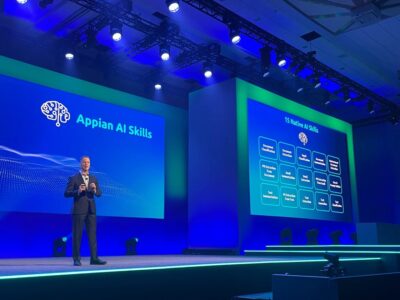
This editorial article is a part of Tech Education Month 2022 of Technical.ly's editorial calendar. This month’s theme is underwritten by Verizon 5G. This story was independently reported and not reviewed by Verizon before publication.
With $65 billion of support from the federal government, broadband access and new programs have been at the top of many public and private sector stakeholders’ minds. Now, a telecommunications giant and a community organization are teaming up to make sure that D.C. residents know about the programs and affordable internet options available to them.
Comcast and Serve Your City/Ward 6 Mutual Aid partnered to launch a so-called “Digital Navigators” program that aims to expand broadband access in the city. With the program, which launches today, community leaders will provide information and outreach about current low-cost internet access and digital literacy to Ward 7 and 8 residents.
The actual digital navigators will educate residents on the federal Affordable Connectivity Program (ACP), which offers $30 per month (0r $75 per month on Indigenous tribal lands) in credits for internet or mobile service. A statement said that eligible families can combine ACP offerings with Comcast’s Internet Essentials service to access internet service for free.
Maurice Cook, executive director of Serve Your City and lead organizer for Ward 6 Mutual Aid, told Technical.ly that the program with Comcast is part of the combined organization’s greater digital engagement efforts. In the wake of the pandemic, Serve Your City made requests for spare laptops and tablets to donate; After refurbishing them, the organization distributed those devices throughout the community. Cook’s nonprofit also purchased devices in bulk from wholesalers while working with companies like Kajeet and Verizon, as well as acquiring high-speed mobile hotspots for families that could support a few devices.
The digital navigators are members of the target communities, including returning citizens and unhoused or housing insecure individuals from the areas hit hardest by the pandemic. The position is a paid one, Cook clarified.
“We’ve trained them up and put some money in their pockets, and they do our outreach with us to make sure that everyone has access to the internet,” Cook said. “So folks from the communities themselves, they can be their own tech heroes to solve this problem within our own community.”
The program will incorporate door knocking, events, community center tabling and more to reach ward residents. The navigators will make sure that residents are aware of affordable connectivity programs, as well as help them navigate the application process if necessary. It won’t specifically offer digital literacy training, but Serve Your City does offer that in some of its other programs. Cook said that the organization has found that many residents are unaware of the programs accessible to them.
“The more people that know that the federal government is providing a subsidy to support higher internet speed or just basic internet access, the more people will have the opportunity to take advantage of the program,” Cook said. “Just being out there, sharing this information, making sure people are aware and also providing the support to help people actually navigate through the system to apply, this will definitely support more internet access for everybody.”
According to Comcast, the digital navigator is effective in engaging the community and addressing some of the root causes of the digital divide. A Comcast-supported study from Boston Consulting Group found that after receiving digital navigator services, 65% of respondents obtained either internet access or a device at home. This boosted to 72% among Black and Latinx respondents. Additionally, 85% used the internet more frequently, nearly 50% gained better healthcare and 40% found additional support for needs like food, rent and housing. Plus, one in three found either a new job or gained a higher income.
“By working with a trusted community partner like Serve Your City, whose digital navigators live in the community, we can get more people connected to the internet, make them aware of programs such as the Affordable Connectivity Program that they may be eligible for (drastically reducing the cost or making it free) and build their digital skills,” said Misty Allen, VP of government and regulatory affairs for Comcast’s Beltway Region.
Join the conversation!
Find news, events, jobs and people who share your interests on Technical.ly's open community Slack

DC daily roundup: Esports at Maryland rec center; High schoolers' brain algorithm; Power data centers with coal?

DC daily roundup: Tyto Athene's cross-DMV deal; Spirit owner sells to Accenture; meet 2GI's new cohort

DC daily roundup: $10M to streamline govt. contracting; life sciences might dethrone software; Acadia's new $50M


